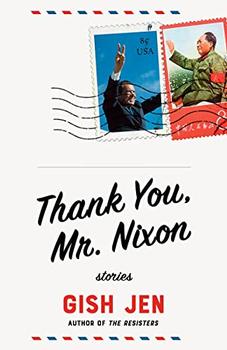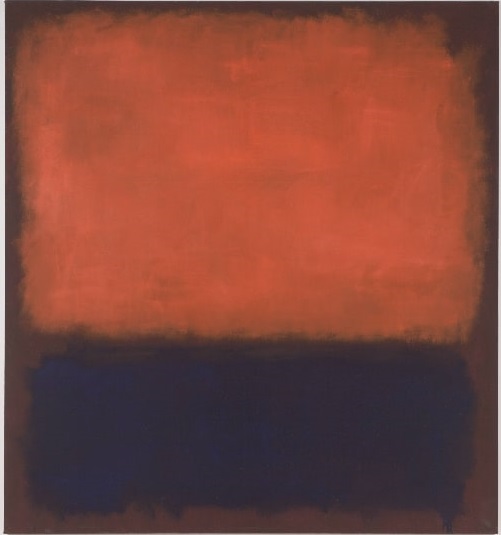Summary | Excerpt | Reviews | Beyond the Book | Read-Alikes | Genres & Themes | Author Bio

Stories
by Gish JenThis article relates to Thank You, Mr. Nixon
 The story "Rothko, Rothko" in Gish Jen's collection Thank You, Mr. Nixon features an art forger who is dedicated to mimicking the work of the abstract painter Mark Rothko. Known for his depictions of intensely colored rectangular figures, Rothko is considered one of the most notable artists of the 20th century.
The story "Rothko, Rothko" in Gish Jen's collection Thank You, Mr. Nixon features an art forger who is dedicated to mimicking the work of the abstract painter Mark Rothko. Known for his depictions of intensely colored rectangular figures, Rothko is considered one of the most notable artists of the 20th century.
An American of Latvian Jewish descent, Rothko was born in the then-Russian city of Dvinsk (now Latvia's Daugavpils) in 1903. After his family moved to the United States in 1913, he attended grade school and high school in Portland, Oregon before going on to Yale University in 1921. He dropped out after two years and wandered the country, then moved to New York City in 1925, beginning his painting career as a student of the Russian-born artist Max Weber.
Rothko's initial style was more realistic than the one that later came to define his work. This can be observed in the Subway series, paintings from the late 1930s that feature human figures in an urban setting and a division of space that conveys a sense of isolation. Over the following years, Rothko gradually evolved towards a more abstract approach, with the figures in his paintings becoming less distinct, and eventually arrived at the soft-edged shapes hovering against vaguely rendered backgrounds for which he is famous today. Examples of these iconic works include Blue, Green, and Brown (1952) (from which a poem in Ocean Vuong's Night Sky With Exit Wounds takes its title) Orange and Yellow (1956) and No. 14 (1960). Suffering from poor health, Rothko died by suicide in 1970.
Rothko is considered to belong to the school of abstract expressionism, a term used to describe the work of American abstract artists who were inventing new forms in the 1940s and '50s. However, his art is more subdued than many of the others grouped under this umbrella, such as Jackson Pollock and Willem de Kooning, whose work tends to be characterized by spontaneity and dynamism.
Rothko paintings are known for their often impressive size — according to Artnome, they collectively span 23,342 square feet, the equivalent of about five regulation NBA basketball courts — as well as the subtlety and emotional quality of their presentation. His work is considered to be influential in the area of color-field painting — a term used to describe the painting of large, flat stretches of color.
Rothko was secretive about his methods, but this hasn't stopped experts from investigating the materials and approaches he favored. In Jen's story, Ming — the art forger — puts her technical knowledge of Rothko to work, clearly having done research on the substances that the artist employed to change the properties of oil paint and achieve certain effects. Ming mentions the necessity of phenol formaldehyde, a resin that conservators at the Tate Modern along with others have confirmed Rothko used to keep layers from blending.
She also reveals that Rothko's layers are at least part of what draws her to his work. "In his heart," she says, "Rothko is a Chinese painter…he want you to come inside the painting…Like a painting of a Chinese mountain, you can see the path you should walk there." Referring to the colors Ming uses for her Rothko reproductions, the narrator, Rich, comments, "One on top of the other…You can't see them, but they are all there inside."
No. 14 (1960) by Mark Rothko, courtesy of San Francisco Museum of Modern Art
Filed under Music and the Arts
![]() This "beyond the book article" relates to Thank You, Mr. Nixon. It originally ran in March 2022 and has been updated for the
November 2022 paperback edition.
Go to magazine.
This "beyond the book article" relates to Thank You, Mr. Nixon. It originally ran in March 2022 and has been updated for the
November 2022 paperback edition.
Go to magazine.
Common sense is genius dressed in its working clothes.
Click Here to find out who said this, as well as discovering other famous literary quotes!
Your guide toexceptional books
BookBrowse seeks out and recommends the best in contemporary fiction and nonfiction—books that not only engage and entertain but also deepen our understanding of ourselves and the world around us.